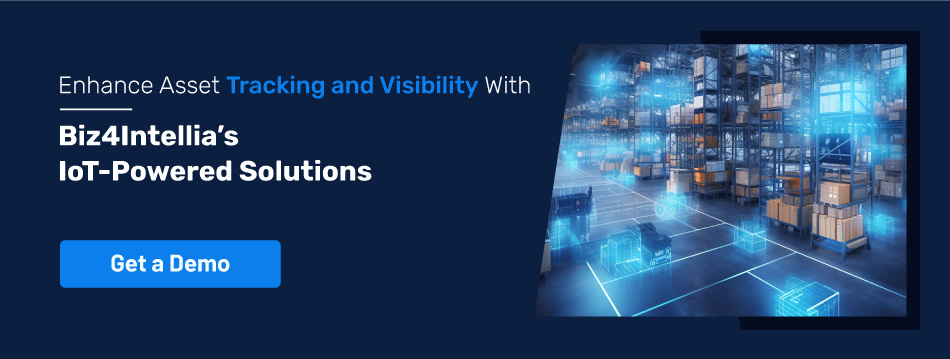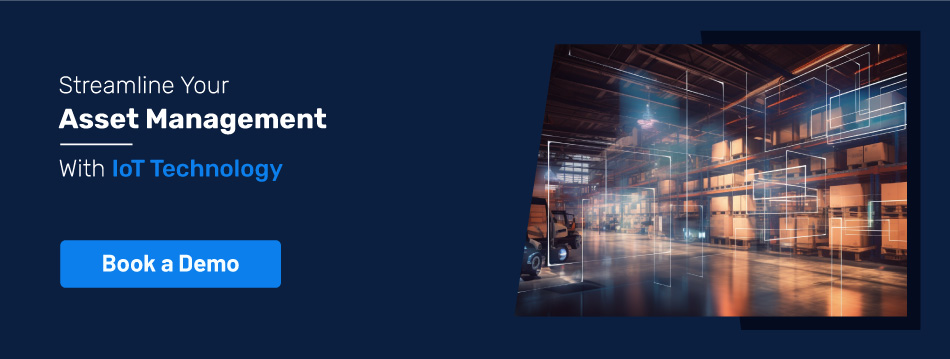IoT technology is scaling-up industrial growth at significant levels. Multiple domains are embracing IoT for its endless potential in automation and digitization.
It enables everyday objects with the ability to send and receive information through sensors and is thus increasing their potential at a whole new level. Machineries, processes, and whole environments have now become easier to monitor with the integration of IoT technology.
The IoT enables industrial assets to respond based on the collected information through sensors. With automation being perceived as a simplified source of management, IoT technology is expected to reach outstanding levels in the coming years.
Asset tracking in industries is the ability to know the exact location/position of the item at any moment in time. In the current scenario, many companies are adopting smart asset management to gain accuracy and error-free calculations regarding inventories.
Also, an IoT-powered solution not only provides information but enhances the capabilities of the assets through self-correction and predictive maintenance.
7 Best Reasons To Utilize IoT For Asset Management
Let’s explore the 7 best reasons to utilize IoT methods to manage industrial assets.

1. Identifiable Growth Opportunities
It is not at all surprising that companies are extremely benefitting from adopting IoT technology in asset-intensive domains. In manufacturing, retail, logistics & transportation, and equipment rental domains, asset inefficiency can be a bit costly. Therefore, integrating IoT asset management can be useful in terms of real-time visibility, and condition monitoring. The perks of installing IoT-powered asset management are self-explanatory with multiple businesses showing high interest in using data-driven techniques across business processes.
The sensor-enabled methods are replacing manual and time-consuming asset monitoring. It thus reduces human errors and provides accurate results at every step of processing. There are immense growth opportunities for a business with the integration of IoT technology.
Especially, monitoring the assets at an automated level calls for simplified management of multiple types of equipment included in running a business. You can very well proclaim the advantages of using IoT technology due to its data-driven approach, technological importance, real-time alerts, and predictive analysis.
With a smart asset management solution, you can gain entitlement for your brand with proven productivity, profitability, and results.
2. Real-Time Location Monitoring
The use of IoT in asset management provides compelling reasons for implementing real-time location monitoring. By leveraging IoT sensors and technologies such as GPS, RFID, and Bluetooth, organizations can gain precise and continuous visibility into the physical location of assets. This real-time location monitoring offers several significant benefits.
Firstly, it optimizes asset utilization by enabling organizations to track and locate assets efficiently.
With accurate location data at their fingertips, businesses can identify available assets, prevent unnecessary purchases or rentals, and ensure optimal asset allocation across projects or departments.
This eliminates inefficiencies and reduces costs associated with underutilized or misplaced assets. Organizations can proactively track assets' movements, set geofences or boundaries, and receive immediate alerts if assets move outside predefined areas.
This enhances security and enables swift action to recover stolen or misplaced assets, minimizing financial losses and operational disruptions.
Remote asset management improves supply chain visibility, allowing organizations to track the movement of goods, optimize logistics operations, and ensure timely delivery. This helps in streamlining inventory management, preventing stockouts, and meeting customer demand more efficiently.
3. Efficient Utilization of Resources
Sensor-based processing of the assets involves better production, sometimes even beyond their potential. An IoT-powered asset management solution is equipped with the latest hardware, and software functioning for quicker and better results.
It is a smart solution that mainly focuses on the efficient utilization of resources. For instance, if an industry requires a certain amount of fuel for machine processing, it needs to keep a count of the quantity required in the future.
To keep up with the smooth functioning of the plant, the fuel requirements must be measured and kept in stock before the supply goes empty, which would further hamper the production processes.
Here, IoT technology plays a significant role. It analyses the requirement based on past fuel consumption patterns and provides you with an accurate number that will be required shortly.
In the case of asset management, you can use the sensor devices to extract the condition data like temperature, noise, vibrations, etc., and compare the machine's performance.
This helps in predicting the actual condition and gaining actionable insights to make intelligent decisions before business productivity is affected. Thus, the Internet of Things asset management system serves the platter by efficiently analyzing the situation and utilizing the resources wherever most needed.
4. Warehouse Stock Management
IoT technology can automate and streamline inventory tracking processes. By leveraging IoT sensors, warehouses can achieve real-time visibility into stock levels, ensuring accurate data and minimizing the risk of inaccuracies.
The industrial IoT solution enables warehouse managers to proactively manage inventory, avoiding stockouts or excess stock.
With IoT technology, warehouses can automate stock replenishment through automatic reordering based on real-time data, optimizing inventory levels and reducing the chances of human error.
The seamless integration of IoT in asset management empowers warehouses to enhance efficiency, improve inventory accuracy, and streamline stock management operations.
5. Smart Industrial Ecosystem
With the advent of IoT technology and its smart solutions for industries, there is a drastic change in terms of productivity and the environment. Sensor-equipped assets play a huge role in providing accurate information about the machine's condition, thereby contributing to a better industrial infrastructure compared to previous times.
The automated functioning of IoT asset management use cases is now boosting the worth of assets at significant levels. It is widely accepted by large-scale businesses to grow customer involvement, improve their experience, reduce operational costs, and enhance asset efficiency.
IoT is thus creating a smart industrial ecosystem with everything being interconnected. The users can leverage lots of advantages through IoT-powered asset monitoring solutions.
It provides affordable connectivity, scalable cloud platforms, ubiquitous mobile applications, and lots more.
Secured connectivity between the assets creates a smart industrial ecosystem in which the information is passed on for better industrial analysis and business growth.
From a futuristic point of view, IoT asset management can also incorporate machine learning and artificial intelligence concepts to facilitate more advancements.
However, IoT serves with innovation and smart systems that are incredibly fast and are greatly expanded for growing businesses.
6. Agile Solution Boosts Productivity
IoT and asset management offer several benefits, including the ability to implement agile solutions that boost productivity. IoT-based asset monitoring provides real-time visibility into the utilization of assets, allowing businesses to track their performance, location, and availability.
By collecting and analyzing data from IoT sensors embedded in assets, companies gain insights into load distribution and operational cycle times.
This visibility and data-driven approach enable businesses to make informed decisions and implement agile solutions.
With real-time asset utilization information, companies can optimize workflows, allocate resources efficiently, and streamline operations. They can identify underutilized or idle assets and make adjustments to improve productivity.
By leveraging IoT-based insights, businesses can quickly adapt to changing demands, identify bottlenecks, and implement agile strategies to enhance operational efficiency.
7. Optimising Asset Performance
The use of IoT in asset management offers several benefits in this regard. By continuously monitoring assets through IoT sensors and collecting real-time data, organizations can make data-driven decisions to improve performance.
By monitoring asset parameters such as temperature, vibration, and energy consumption, organizations can detect anomalies or deviations from optimal performance.
With this information, proactive measures can be taken to optimize asset performance, ensuring that assets operate at their best capacity.
By analyzing data collected from assets, patterns, and trends can be identified, allowing organizations to schedule maintenance activities strategically. Predictive maintenance ensures that assets are serviced or repaired before any unexpected failures occur, minimizing downtime and maximizing asset availability.
Wrapping Up!
There are immense reasons why you should choose IoT technology for better asset management services.
It can be real-time monitoring, predictive analysis, cloud-based data management, and other smart features that constitute smart industrial processing. You can simplify the tasks through a single dashboard and save your time against complex tasks that can be resolved through automation.
Installing an IoT-powered asset monitoring system will never go in vain and only lift your business with excellent opportunities and productivity.














